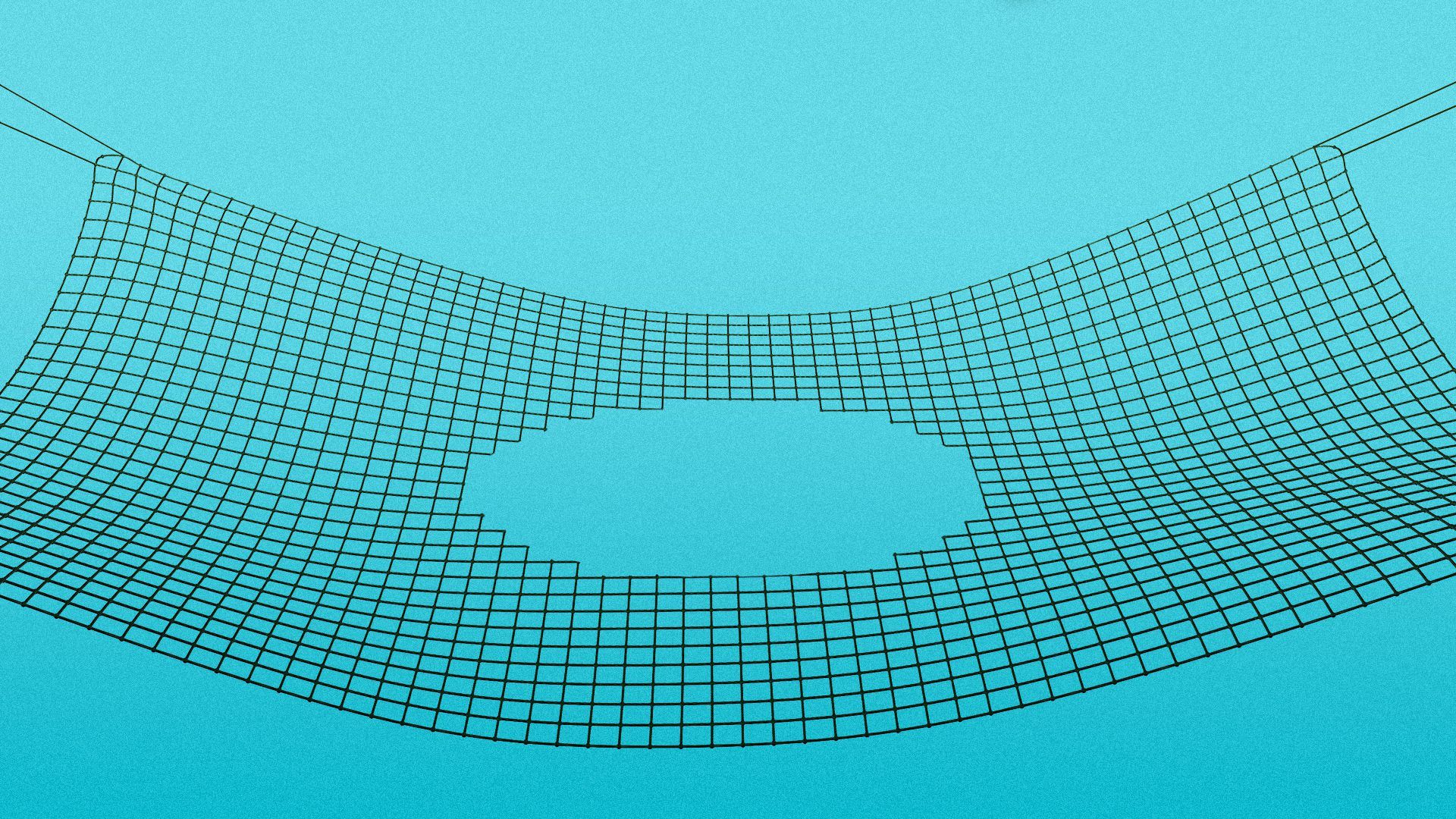
Illustration: Aïda Amer/Axios
The "big, beautiful bill" slashes food and health benefits for the poorest Americans, while giving tax cuts to higher earners — blowing a hole in the nation's safety net, according to healthcare experts and advocates for lower-income people.
Why it matters: Experts say the cuts could unleash a tidal wave of pain — overcrowded emergency rooms, an increase in chronic health care issues, more medical debt, and more folks going hungry.
- If the $4 trillion bill passes into law, it would be the biggest cut to the social safety net in decades, as the Washington Post noted.
State of play: It's hard to know exactly where the bill will land, but it's on track to cut 20% of spending on food stamps, or SNAP, with more than 2 million losing benefits, per an estimate from the Congressional Budget Office provided to Senate Democrats.
- Cuts to Medicaid could lead to nearly 12 million people losing health insurance, per the CBO.
- Changes to the Affordable Care Act could lead to losses for millions more; others would face higher healthcare costs.
There's massive overlap here — nearly 30 million of the 38.3 million people receiving SNAP in 2022 were also enrolled in Medicaid, notes KFF.
- It's a double-whammy: these folks would need more for healthcare, while being further stretched on groceries.
By the numbers: The bottom 20% of earners would see a nearly 3% decline in income, about $700, under the Senate version of the bill. That's per a new analysis from the Yale Budget Lab, which takes into the social safety net changes into account.
- The top 1 percent would see a nearly 2% increase, or $30,000.
The intrigue: Many of the losses in Medicaid and SNAP coverage are the result of new work requirements that opponents say are actually red tape thickets that typically lead people to lose benefits — even those who are working.
- Proponents argue that work requirements for able-bodied adults help "reduce unnecessary enrollments in welfare," as this Heritage Foundation report explains.
The other side: The White House and Congressional Republicans say work requirements are just a common-sense way to reduce waste, fraud and abuse.
- "By slashing waste, fraud, and abuse in these programs and implementing commonsense work requirements, The One, Big, Beautiful Bill will preserve these vital lifelines for generations of Americans to come," White House spokesman Kush Desai said in a statement.
- "The bill's pro-growth provisions and working class tax cuts will turbocharge America's economic resurgence."
- The White House also argues that the Congressional Budget Office's assumptions about Obamacare changes are overblown.
💭 Emily's thought bubble: Beginning in 2020, when Trump was in office, the federal government unleashed a torrent of money in social safety net spending that continued into the Biden era. It drastically reduced poverty rates in the U.S.
- That era appears to be well in the rearview.